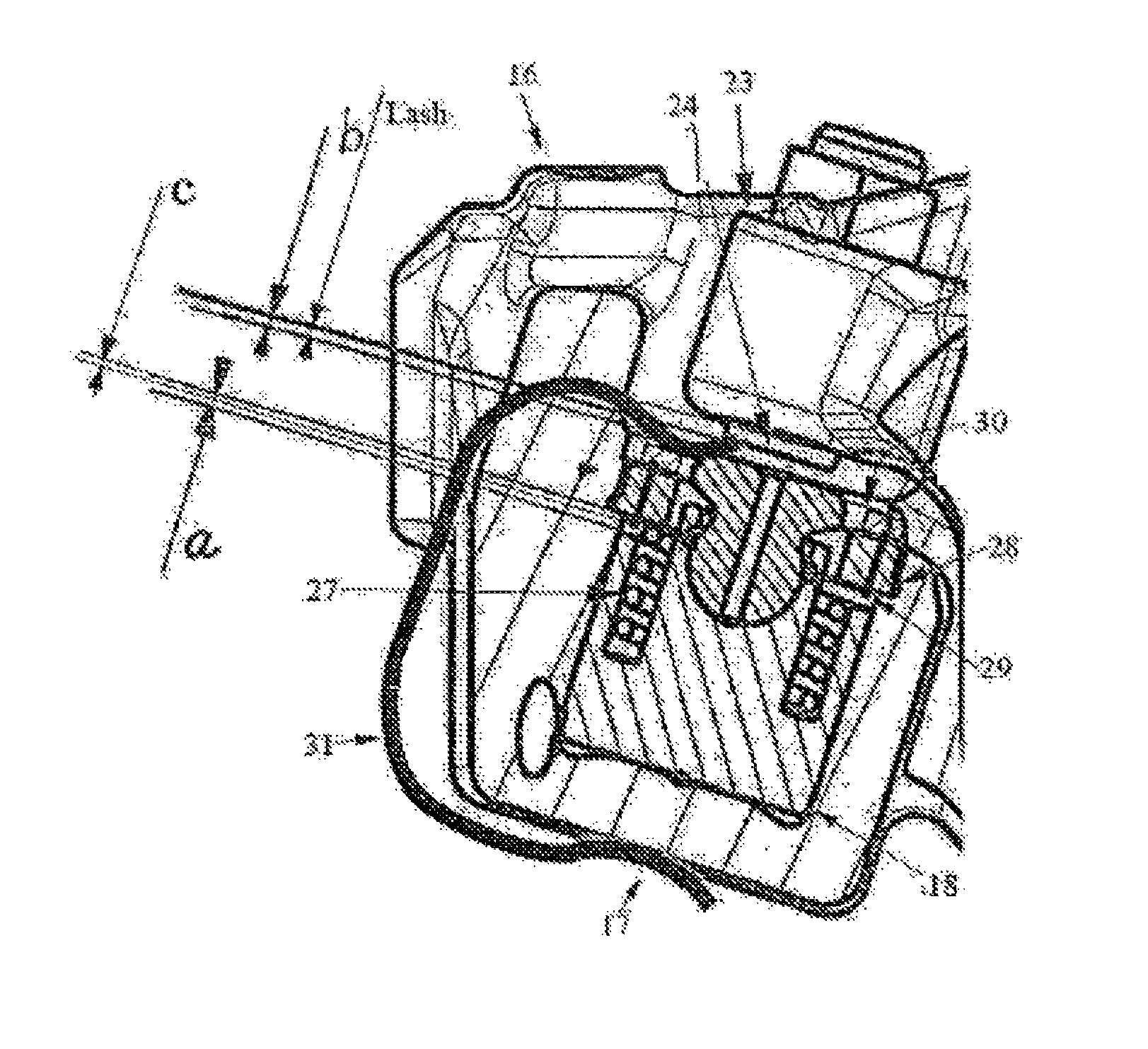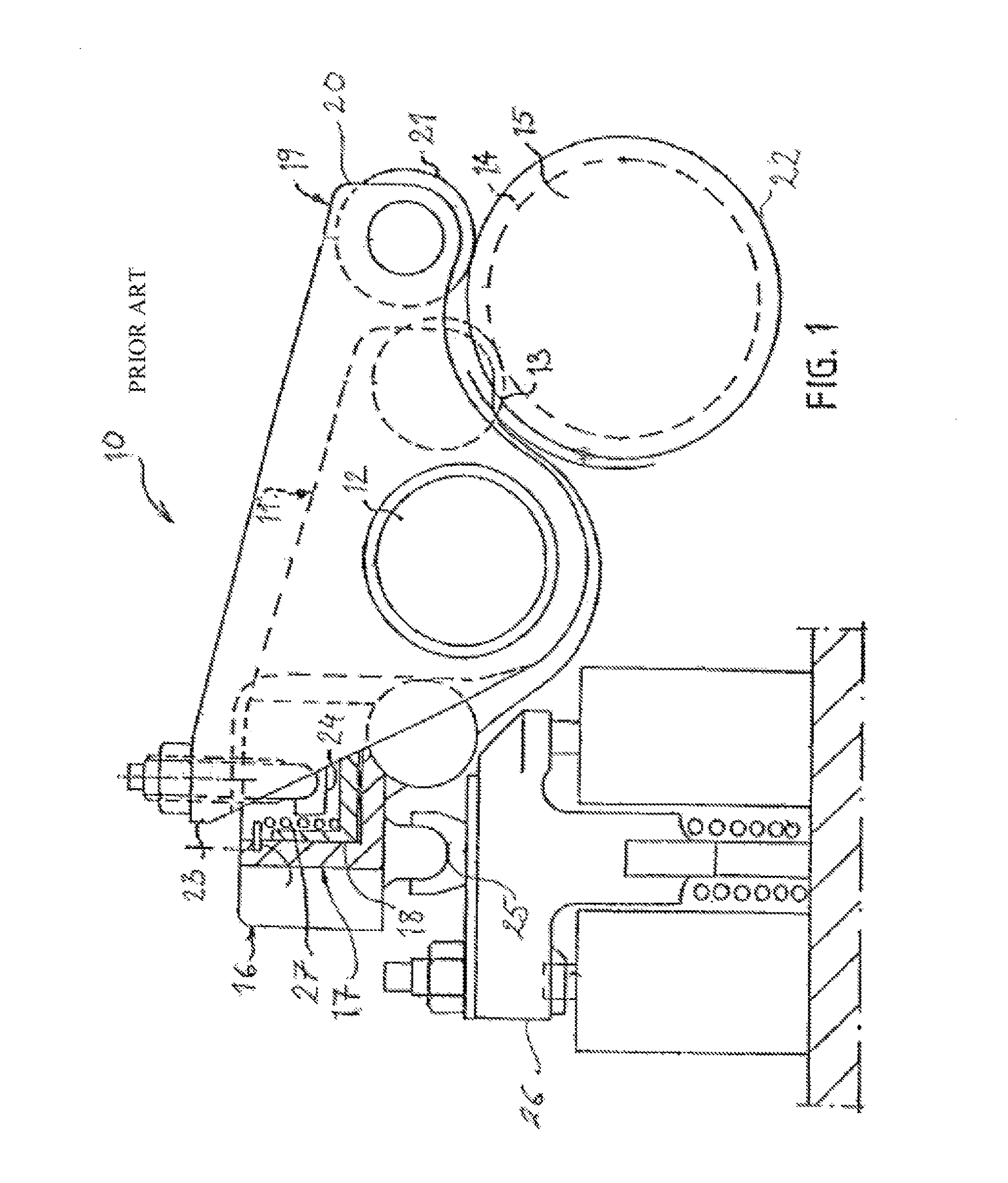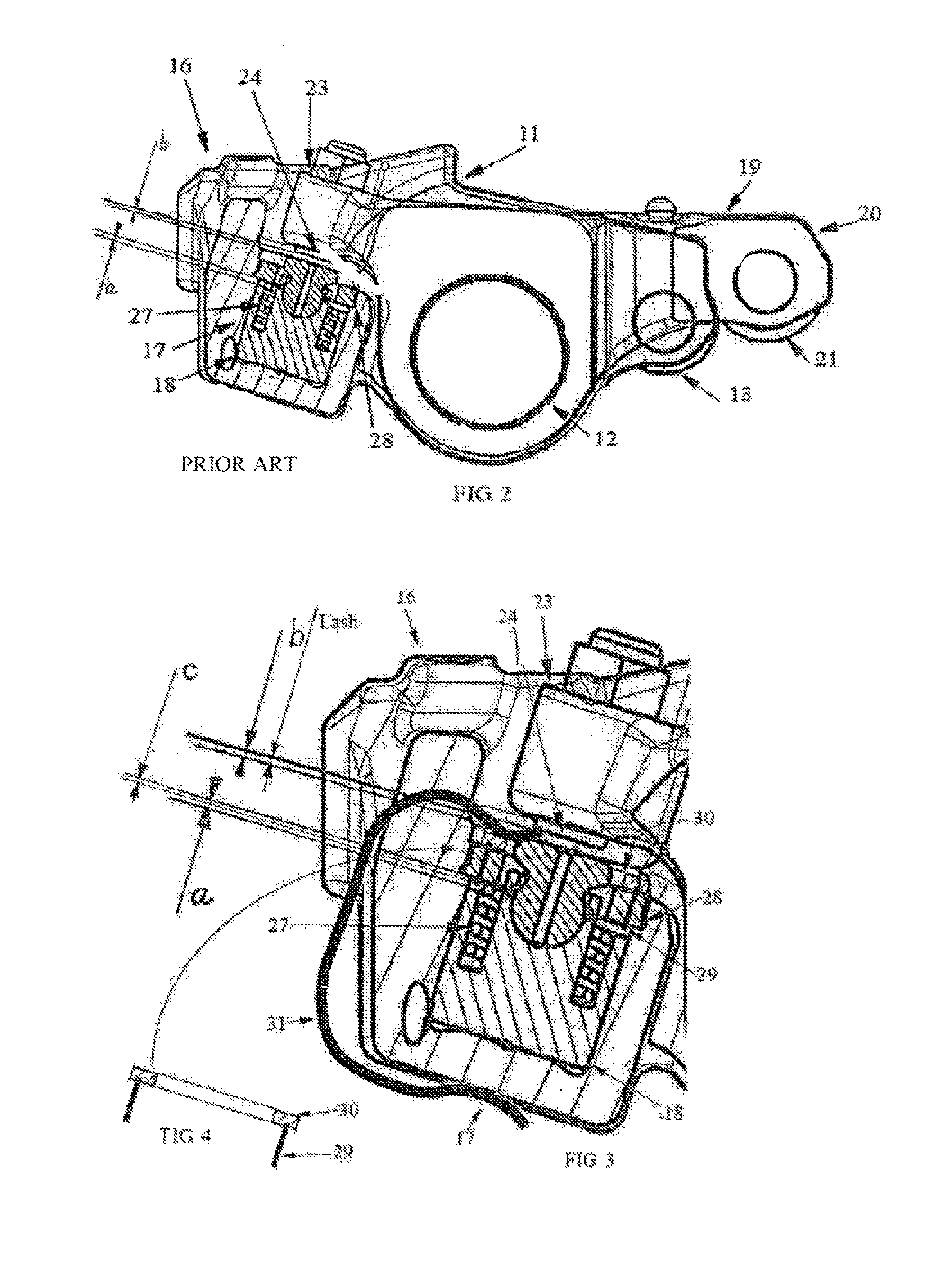Exhaust valve mechanism for an internal combustion engine
a technology of exhaust valve and internal combustion engine, which is applied in the direction of valve arrangement, machine/engine, output power, etc., can solve the problems of high cost, more vulnerable to mechanical systems, and low exhaust temperature for exhaust after treatment system, so as to shorten the expansion stroke. the effect of the expansion stroke and the increase of the exhaust temperatur
- Summary
- Abstract
- Description
- Claims
- Application Information
AI Technical Summary
Benefits of technology
Problems solved by technology
Method used
Image
Examples
Embodiment Construction
[0014]FIG. 1 schematically illustrates a prior art valve mechanism 10 as described in U.S. Pat. No. 6,983,725 for use in an internal combustion engine (not shown). The mechanism 10 comprises a main exhaust valve rocker arm 11, which is rockably mounted on a rocker arm shaft 12. One end of the main rocker arm 11 has a cam follower roller 13, rotatably mounted thereon. The cam follower roller 13 is in contact with a schematically shown cam element 14 on the camshaft 15. At its end 16 opposite to the end with the cam follower roller 13, the main rocker arm 11 is provided with a piston cylinder arrangement 17 comprising a master piston 18 and a slave piston 25 located in two corresponding piston cylinders in the main rocker arm end 16.
[0015]A secondary rocker arm 19 is arranged beside the main rocker arm and mounted on the rocker arm shaft 12 for activation of an exhaust brake mode. One end 20 of the secondary rocker arm 19 has a cam follower roller 21, rotatably mounted thereon. The ca...
PUM
 Login to View More
Login to View More Abstract
Description
Claims
Application Information
 Login to View More
Login to View More - R&D
- Intellectual Property
- Life Sciences
- Materials
- Tech Scout
- Unparalleled Data Quality
- Higher Quality Content
- 60% Fewer Hallucinations
Browse by: Latest US Patents, China's latest patents, Technical Efficacy Thesaurus, Application Domain, Technology Topic, Popular Technical Reports.
© 2025 PatSnap. All rights reserved.Legal|Privacy policy|Modern Slavery Act Transparency Statement|Sitemap|About US| Contact US: help@patsnap.com



